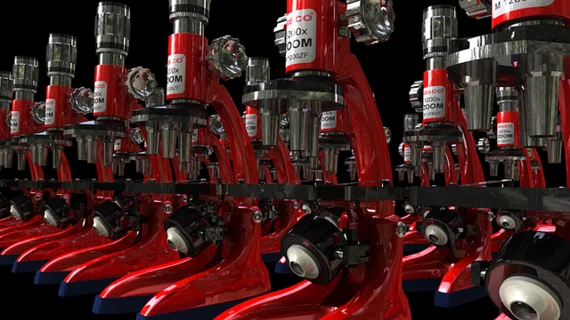PACS vendors under the KLAS microscope as many users consider a change
More than 30% of surveyed PACS users are looking around for a potential replacement, according to an 82-page report KLAS released Nov. 8, “Changing Market Leads to Volatility among Large- to Small-Volume Organizations.”
The firm arrived at the report’s findings after analyzing surveys completed by 368 PACS users in provider organizations.
Key among the market-overview observations KLAS offers is that almost a third of these imaging groups and departments are mulling a change in PACS vendor.
“The U.S. PACS market is poised for change,” KLAS states in the report’s executive summary, adding that PACS client organizations are “looking for vendor partners to advance their enterprise imaging strategies.”
KLAS breaks its PACS customer reviews into those from large providers —imaging organizations processing 300,000 or more imaging studies per year—and small/midsize outfits handling fewer than that figure.
Pros, Cons of PACS Players and Their Offerings
Perennial PACS award-winner Sectra continues to stand tall in the eyes of its end-user groups large and small. Sectra customers of all sizes “view the PACS technology as top-tier, stable, rich in intuitive features and easy to customize,” KLAS reports.
Other big PACS names receiving KLAS customer-survey analyses include:
Agfa HealthCare:
While feeling that Agfa is moving in the right direction, some customers are waiting for Agfa to deliver originally promised functionalities and have high expectations for the development of future versions.”
Change Healthcare:
A consistent market player across all volumes, Change meets its customers’ needs with what some call an easy-to-use, reliable and scalable PACS. However, some note that development for the on-premises solution has lagged as the vendor has focused its ongoing strategy on the cloud.”
Fujifilm:
Customers of all volumes are largely satisfied with Synapse’s ease of use and flexibility, though large-volume sites more often report needing additional functionalities and fixes. Dissatisfied customers cite bumpy upgrades and unmet timelines for delivering new technology, leading some to consider other options.”
GE Healthcare:
GE has the most vulnerable customer base among measured vendors (i.e., many clients plan to leave or would leave given the chance) but still maintains a large market share. Remaining small-volume customers are more satisfied with Centricity PACS’ technology and stability, though all note the PACS feels old.”
Philips:
Philips Vue PACS performs well among small/midsize organizations (the majority of their customers), who feel the PACS is easy to use, stable and highly functional for radiologists. Large-volume sites report more inconsistency—some are highly satisfied, while others find Vue PACS unstable and buggy.”
Also making a showing in the KLAS report with strengths and weaknesses as PACS suppliers are Infinitt, Intelerad, Konica Minolta, Merative and Novarad.
PACS Continues to Outpace EI
Earlier this fall, PACS report co-author Monique Rasband, KLAS’s VP of imaging, cardiology and oncology, spoke with Radiology Business about trends in radiology informatics.
Asked to what extent she’s seen PACS markets infiltrated by up-and-coming enterprise imaging offerings, Rasband suggested such a scenario is, so far at least, nowhere in sight.
“If you look at new purchases right now, PACS is by far leading,” she told reporter Dave Fornell. “This is because there are a lot of aging systems and legacy systems that are being replaced. There’s a lot of energy around PACS.
“I always tell providers to be cautious about comparing the numbers, because it’s not necessarily that one technology is more popular,” Rasband added. “It’s often all about the time it takes to replace legacy systems.”
KLAS Research’s new report on PACS is available here.

